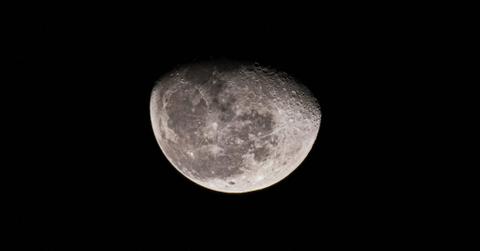Moonquakes and Surface Distortions: Study Reveals Moon Shrinking in Size, Posing Hazards for Human Exploration

The moon is shrinking, causing moonquakes and surface warping that could pose risks to astronauts on lunar missions, a new study has revealed.
Jan. 31 2024, Published 9:10 a.m. ET
New findings suggest that the moon is undergoing a contraction, resulting in moonquakes and surface distortions that may pose challenges for future lunar missions, according to sources.
Researchers at the University of Maryland (UMD) disclosed that specific regions near the moon's South Pole are particularly susceptible to prolonged seismic shaking, with potential implications for astronauts during upcoming lunar expeditions.
Over the course of the last few hundred million years, the moon has experienced a gradual reduction in size, shrinking by approximately 150 feet in circumference as its core cooled, according to a statement from UMD describing their study.
This contraction has led to the formation of creases on the lunar surface, like the wrinkles that form on a grape transforming into a raisin. However, unlike the pliable skin of a grape, the moon's surface is brittle, resulting in the development of faults where different sections of the crust have pressed against each other.
These faults are causing deformations on the lunar surface, resulting in "moonquakes," particularly in areas designated by NASA for potential crewed Artemis III landings.
The researchers recently published their findings in The Planetary Science Journal, raising concerns about the stability of these regions.
The scientists have linked a group of faults in the moon's South Pole to one of the most potent moonquakes ever recorded, a magnitude 5 event in 1970. Through simulations of surface slope stability, they identified specific areas prone to landslides triggered by seismic shaking.
Lead author of the study, Thomas R. Watters, highlighted the possibility of shallow moonquakes capable of causing strong ground shaking in the south polar region. He emphasized the importance of considering the “global distribution of young thrust faults” and their potential activity when planning the location and stability of permanent lunar outposts.
Shallow moonquakes, occurring about 100 miles deep into the crust, can last for extended periods compared to earthquakes, potentially posing risks to human settlements on the moon. Loose sediments on the lunar surface make it susceptible to shaking and landslides, according to co-author Nicholas Schmerr.
The researchers intend to continue mapping the moon's seismic activity to identify other areas that may pose risks for human exploration.
Never miss a story — sign up for the Front Page Detectives newsletter. Be on the scene the moment news breaks.
As NASA's Artemis missions approach their first crewed flight in late 2024, with a focus on establishing a long-term lunar presence, the researchers underscored the importance of ensuring the safety of astronauts, equipment and infrastructure.
Schmerr assured that the moon's subtle shrinking would not impact processes on Earth, such as tides, eclipses or full moons. He explained that the mass of the moon remains constant, and the gradual radius change would not substantially affect tidal cycles or the appearance of celestial events.
The ongoing research aims to better prepare for lunar seismic activity and enhance the safety of future lunar missions.
Become a Front Page Detective
Sign up to receive breaking
Front Page Detectives
news and exclusive investigations.
